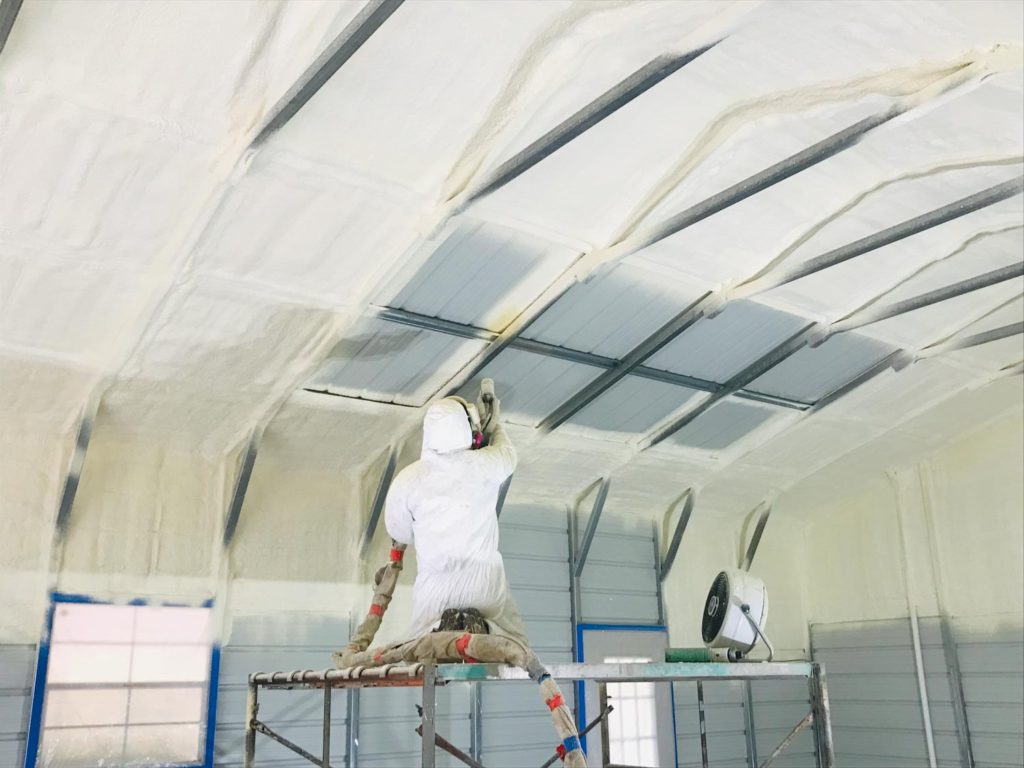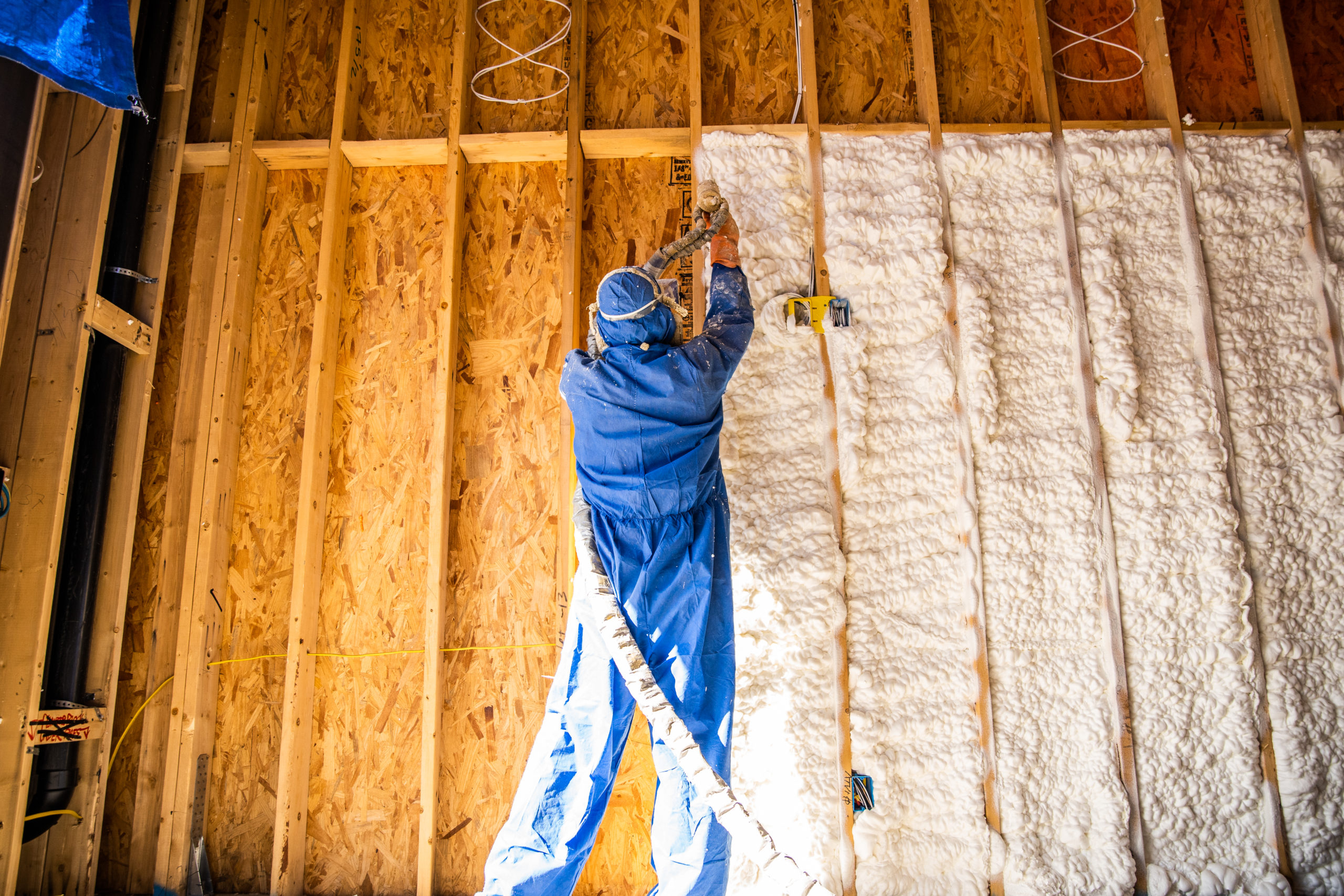Spray Foam: The Ultimate Remedy for Air Sealing and Insulation
Spray foam insulation has actually arised as a leading option for effective air sealing and thermal insulation, providing an unique combination of homes that establish it besides typical approaches. Its ability to expand and fill gaps makes it particularly effective in avoiding air leak, which can considerably affect energy efficiency. Recognizing the full scope of its advantages, setup processes, and comparisons with various other insulation kinds is vital for making notified decisions. As we explore these facets, the effects for both brand-new buildings and retrofits come to be increasingly substantial. What aspects should influence your selection?
What Is Spray Foam?
Spray foam is a flexible insulation product that combines the concepts of air securing and thermal resistance to improve power effectiveness in structures. Composed mostly of polyurethane or various other similar compounds, spray foam is used as a liquid that increases upon contact with surface areas, creating a solid, continual layer of insulation. This one-of-a-kind home allows it to fill spaces, splits, and voids that standard insulation products may overlook, giving an exceptional air seal.
There are 2 main sorts of spray foam: open-cell and closed-cell. Open-cell spray foam is lighter and a lot more versatile, providing outstanding sound absorption and a reduced R-value per inch - Spray Foam. In comparison, closed-cell spray foam is denser, offering a higher R-value, dampness resistance, and added architectural integrity to building parts
The application process commonly entails specialized tools, guaranteeing a seamless application that abides by numerous substratums, consisting of timber, steel, and concrete. This versatility makes spray foam ideal for both brand-new buildings and retrofitting existing frameworks. Its capability to produce a closed barrier considerably adds to reducing power intake and improving indoor air quality, thereby making it a favored selection amongst home owners and building contractors alike.
Advantages of Spray Foam Insulation
Among one of the most considerable advantages of spray foam insulation is its remarkable ability to develop a continuous air barrier, which properly lessens energy loss. Unlike traditional insulation materials, spray foam expands to load voids and fractures, making certain that air leak is drastically lowered. This particular not only boosts energy performance however also leads to decrease utility expenses in time.
Furthermore, spray foam insulation offers premium thermal resistance, contributing to an extra stable interior setting. Its high R-value per inch enables for effective insulation in constrained spaces, making it suitable for attics, walls, and crawl areas. The moisture-resistant residential or commercial properties of spray foam aid prevent mold and mildew growth, advertising much healthier living conditions.
One more essential advantage of spray foam insulation is its sound-dampening top qualities (Spray Foam). It efficiently minimizes sound transmission in between areas, creating a quieter and more comfortable home environment. The sturdiness of spray foam additionally attracts attention, as it does not sag or clear up with time, maintaining its performance throughout its lifespan
Exactly How Spray Foam Functions
Comprehending exactly how spray foam insulation works is necessary for valuing its performance in air sealing and thermal resistance. Spray foam insulation contains 2 primary parts: isocyanate and polyol material. When these elements are blended, they go through a chain reaction that triggers the material to increase swiftly, creating a thick foam that fills up splits, spaces, and cavities.
As the foam expands, it abides by surface areas, developing a closed seal that considerably reduces air infiltration. This particular makes spray foam insulation extremely effective at preventing drafts and dampness penetration, which can bring about power loss and damage with time. Furthermore, the closed-cell variant of spray foam supplies remarkable thermal resistance due to its rigid structure, effectively minimizing warmth transfer.
The special residential properties of spray foam allow it to comply with uneven surface areas, making certain comprehensive insurance coverage and a seamless obstacle. Therefore, spray foam insulation not only enhances power performance but also adds to boosted indoor air top quality by lowering the buildup of allergens and contaminants. Eventually, comprehending the mechanics behind spray foam underscores its role as an exceptional choice for insulation and air sealing in both commercial and household applications.
Installation Refine Review

Before dig this setup, the room must be properly cleansed and prepped, ensuring that surfaces are without wetness, dust, and debris. Because pollutants can compromise attachment and overall performance, this step is important. As soon as the area is prepared, the application entails blending the 2 elements of the spray foam, which expands upon call and fills voids effectively.
Educated experts must conduct the installation, utilizing specialized equipment to guarantee uniform insurance coverage and ideal thickness. Security preventative measures, including putting on safety gear and ensuring proper air flow, are critical during this process. After application, the foam generally remedies rapidly, developing a solid barrier that improves energy performance.
Comparing Spray Foam to Standard Insulation
When reviewing insulation alternatives, spray foam insulation sticks out in contrast to conventional materials such as fiberglass and cellulose. One of the main advantages of spray foam is its superior air securing abilities. Unlike fiberglass and cellulose, which can permit air seepage, spray foam broadens upon application, filling up holes and gaps to develop an airtight seal. This results in boosted energy performance, as less warmed or cooled down air gets away the home, resulting in lower utility bills. he said
Additionally, spray foam gives a greater R-value per inch than traditional insulation kinds, providing more efficient thermal resistance in a thinner profile. This particular is especially useful in areas with restricted tooth cavity deepness. Spray foam is resistant to moisture and mold and mildew growth, which can be a significant issue with cellulose and fiberglass, especially in damp settings.
Nevertheless, spray foam insulation typically lugs a greater upfront cost than its standard equivalents. Home owners should weigh this initial financial investment versus long-term power savings and performance benefits. Inevitably, while both insulation kinds serve their function, spray foam becomes a more advanced solution for contemporary insulation needs, particularly in regards to air sealing and thermal effectiveness.

Final Thought
In summary, spray foam insulation represents a very effective service for accomplishing ideal air sealing and thermal resistance. Its one-of-a-kind residential or commercial properties, including moisture resistance and audio dampening, make it suitable for different applications in both brand-new building and constructions and retrofitting jobs (Spray Foam). Although the first costs might be higher contrasted to traditional insulation products, the long-lasting benefits, such as substantial power cost savings and boosted indoor air quality, warrant the financial investment and underscore its value in contemporary structure techniques.
Spray foam insulation has arised as a leading remedy for reliable air sealing and thermal insulation, offering an unique combination of buildings that establish it apart from typical techniques.Spray foam is a flexible insulation product that combines the concepts of air sealing and thermal resistance to enhance power efficiency in structures.When evaluating insulation alternatives, spray foam insulation stands out in contrast to typical products such as fiberglass and cellulose. Ultimately, while both insulation types offer their function, spray foam emerges as an extra sophisticated remedy for modern-day insulation requirements, especially in terms of air securing and from this source thermal efficiency.
In recap, spray foam insulation represents a very efficient option for attaining optimum air sealing and thermal resistance.